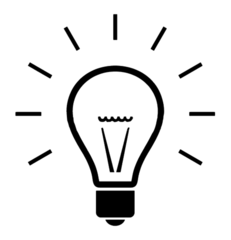Project:Fish Cages: Difference between revisions
creation/3DP notes |
intro; failed design |
||
| Line 5: | Line 5: | ||
|date=January 2019 | |date=January 2019 | ||
|initiator={{£}} | |initiator={{£}} | ||
|materials=[[Acrylic Glass|acrylic glass]] tube, [[PLA]], [[XPS]], ''plastic mesh ("VS-Monodur PA 250 N)'' | |||
|materials=[[Acrylic Glass|acrylic glass]] tube, [[PLA]], [[XPS]], ''plastic mesh'' | |||
|tools=[[bandsaw]], [[3D Printers|3D printers]], [[Laser Cutter|laser cutter]] | |tools=[[bandsaw]], [[3D Printers|3D printers]], [[Laser Cutter|laser cutter]] | ||
|software=[[Tinkercad]], [[Slic3r]], [[Inkscape]], [[Visicut]] | |software=[[Tinkercad]], [[Slic3r]], [[Inkscape]], [[Visicut]] | ||
|cost=approx. 3 € apiece | |cost=approx. 3 € apiece | ||
}} | }} | ||
''mostly | ''mostly notes for now...work in progress'' | ||
When rearing fish larvae in a regular aquarium, many factors reduce their growth and, ultimately, survival. In addition, it's hard to monitor the larvae when they can spread out and hide, but I wanted to be able to inspect them under a microscope during the first two weeks while still having them in beneficial flow-through conditions with well aerated water. | |||
Commercial rearing cages do exist but are quite expensive (I need 10-20!) and have the wrong dimensions for my use case in the laboratory. | |||
== Acrylic Glass Tube == | |||
[...] | |||
== 3D Printing == | == 3D Printing == | ||
| Line 18: | Line 24: | ||
* designed to be about right (ID = tube OD + 1 mm), but final fitting had to be tried with small adjustments in [[Slic3r]] (P4/P5: 100.4 % scale) | * designed to be about right (ID = tube OD + 1 mm), but final fitting had to be tried with small adjustments in [[Slic3r]] (P4/P5: 100.4 % scale) | ||
* 20 % infill, 0.3 mm layers | * 20 % infill, 0.3 mm layers | ||
== Failed Design == | |||
I also made a "mesh wall" prototype but quickly discarded this approach because it required [[Silicone Caulk|silicone caulk]] for assembly. Therefore, it was messy to assemble and basically non-recoverable (i.e. properly cleanable/repairable) without any noticeable benefits. | |||
<!-- [[Category:3D Printing]] | <!-- [[Category:3D Printing]] | ||
[[Category:Labware]] | [[Category:Labware]] | ||
--> | --> | ||
Revision as of 11:15, 30 January 2019
| ProjectInfoBox Floating Fish Rearing Cages | |
|---|---|

| |
| Status: | working, now making more |
| Release Date: | January 2019 |
| Initiator: | Lukas |
| Materials Used: | acrylic glass tube, PLA, XPS, plastic mesh ("VS-Monodur PA 250 N) |
| Tools Used: | bandsaw, 3D printers, laser cutter |
| Software Used: | Tinkercad, Slic3r, Inkscape, Visicut |
| Approx. Cost: | approx. 3 € apiece |
mostly notes for now...work in progress
When rearing fish larvae in a regular aquarium, many factors reduce their growth and, ultimately, survival. In addition, it's hard to monitor the larvae when they can spread out and hide, but I wanted to be able to inspect them under a microscope during the first two weeks while still having them in beneficial flow-through conditions with well aerated water.
Commercial rearing cages do exist but are quite expensive (I need 10-20!) and have the wrong dimensions for my use case in the laboratory.
Acrylic Glass Tube
[...]
3D Printing
- snap-fit ring to hold the mesh
- low-poly circle in Tinkercad may actually be beneficial for this purpose - bit more room for error?
- designed to be about right (ID = tube OD + 1 mm), but final fitting had to be tried with small adjustments in Slic3r (P4/P5: 100.4 % scale)
- 20 % infill, 0.3 mm layers
Failed Design
I also made a "mesh wall" prototype but quickly discarded this approach because it required silicone caulk for assembly. Therefore, it was messy to assemble and basically non-recoverable (i.e. properly cleanable/repairable) without any noticeable benefits.